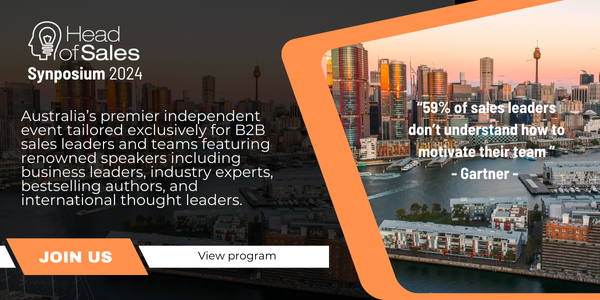The Covid-19 pandemic has caused networking to move online. LinkedIn has become more vital than ever before for business professionals trying to attract new clients and access new opportunities. But are you spending too much time on the platform?
As someone who believes there is definitely such a thing as too much social media, I want to discuss why you need to ration and structure your time on LinkedIn and how to prioritise quality over quantity to get the most out of the experience.
Why too much LinkedIn is not a good thing
I’m an independent LinkedIn trainer. I know exactly how important this platform is for individuals and businesses wanting to grow their online presence and achieve greater successes. But because LinkedIn is aimed at business professionals, it can be easy to forget that it is still a social media platform.
We’re hearing more and more about how too much social media is dangerous for us, and I agree. This year in particular, when we have been confined to our homes for long periods of time, there has been a huge temptation to spend large portions of every day connecting and conversing online.
However, this is exactly what social media is designed to do – clever algorithms, driven by artificial intelligence, are continuously refining and improving our experience online to meet three core objectives.
These are objectives all social media platforms have:
- Engagement goal, keep us plugged in for longer
- Growth goal – gain more subscribers (for LinkedIn the goal here is to transition free subscribers to paid accounts such as LinkedIn Premium or Sales Navigator)
- Sell us advertising (largely Facebooks goal, however we have seen elements of this appearing on LinkedIn in recent years with sponsored posts)
Many people also don’t realise that the user experience design of social media platforms is actually based on ideas that originally came from the gambling industry. Scrolling through the newsfeed triggers similar responses to slot machines, and “likes” give us a rush far more addictive than a “win” could ever be, making us feel validated and successful, all while tapping into that caveman desire for belonging, acceptance and social connection.
So it isn’t surprising that social media addiction has become a growing concern. These sites are actually designed to create addiction and compulsion. It is in their interests that we never sign out.
And, just like in the movie, if we don’t realise we’re plugged into The Matrix, how are we supposed to wake up?
This is why I always outline a number of steps people can take to make sure they don’t spend too much time on LinkedIn and that the time they do spend here is productive.
How to make your time on LinkedIn productive
Because LinkedIn is a business networking platform, just spending time on the site each day can make us feel productive. But you’re only productive if you’re actually achieving something. Scrolling mindlessly through the feed for an hour is not doing anything to further your business goals.
It’s essential to keep a number of things in mind when using LinkedIn:
1. What are your objectives?
The whole point of being on LinkedIn is to help you achieve your goals. You need to write these objectives down if you want to make the LinkedIn experience productive and positive. For example, do you want to:
- Attract new clients?
- Bring in investment?
- Find a new employee?
- Secure a better job?
Or you could simply be on LinkedIn to keep yourself memorable to your peers and stakeholders as this is much harder to do in these times when we can’t meet face to face.
Whatever your objectives are, your time on LinkedIn has to be concentrated on helping you achieve them!
2. What is your ROI?
Just like in any business campaign, you need to keep track of your return on investment when you are spending time on LinkedIn. These days, attention is our most important commodity, and we need to be careful where we spend it. Are we actually getting anything out of the time we put into LinkedIn? If not, you need to look at where you are putting your time and change your activities.
LinkedIn should be seen as a tool. Are you using it, or is it using you?

Ways to ration your time on LinkedIn
If you want to get maximum results from your time on LinkedIn, it is important to ration the time you spend on the platform and make every minute count. I always advise setting yourself definite tasks at specific times, so you can actually start to measure the results you’re getting from the time you’re putting in.
Daily:
- Check your notifications
- Scroll through your newsfeed (set an egg timer if you need to)
- Like and comment on anything you find interesting or useful, particularly if it is from someone who you would like to see more of in your newsfeed
- Unfollow those people who produce content you find annoying – you will still stay connected and they will not be alerted that you have unfollowed them
Weekly:
- Check who has looked at your profile and send them invitations to connect
- Check your diary and send connection invitations based on who you have met, or simply spoken to
- Post content
Fortnightly:
- Look up the people you are targeting
- Like and comment on their posts
- Look at whose posts they are commenting on, or the “people also viewed” sectionof their profile and consider if connecting with these people would further your goals
Monthly:
- Craft content for the month
- Download contacts and send direct messages to people you have recently connected with or who you want to stay top of mind with. DO NOT SPAM. Aim instead to give. Forward articles of interest; facilitate helpful introductions. Aim to serve.
Having a regular schedule like this will automatically help you cut down the amount of time you spend on LinkedIn.
How to prioritise quality over quantity
Connections
The number of connections you have on LinkedIn is not important. However, your connections need to be high-quality – you need to think about the people you are trying to reach, or people who might know these people. Every connection should lead to a potential opportunity. The opportunity might not be from the connection themselves – but from the people they know. I always advocate for being selective but open-minded.
2. Posts
LinkedIn now enables you to see how often the people you follow are posting. I discovered that some of my connections are posting 80 times a week! In my opinion, this is ridiculous.
Your posts need to show thought leadership and add value to your communities on LinkedIn. This does not mean endlessly sharing other people’s posts or posting content that is meaningless – the whole point is to start and contribute to conversations so you can demonstrate your knowledge and expertise in your industry.
It can take time to gain traction, and once a week doesn’t seem like very often to post. But if your content is thought-provoking and encourages comments, you will find you’re showing up much more prominently in people’s newsfeeds.
3. Comments
It is important to comment on the posts of the people you want to reach. Not only does this make you memorable and pull attention to your profile, but it also because comments are like smiles, you have to give them to get them back.
Conclusion
LinkedIn can be a tremendous force for good if you make the best use of your time on the platform.





























